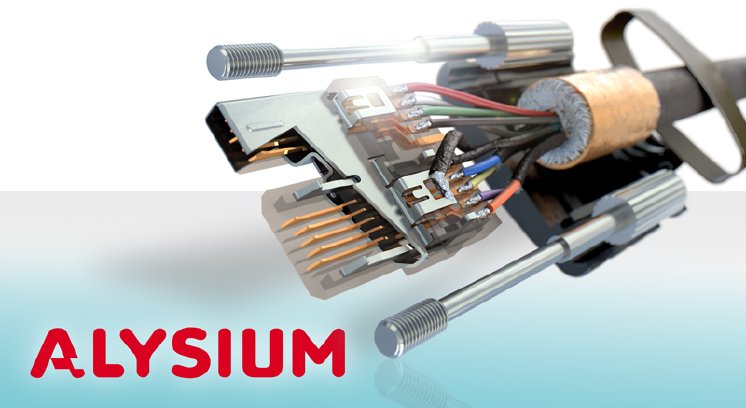We have all at some point experienced the following: you insert a USB cable and there is no response from the system, so you pull the cable out, try again and now the device is recognised. To tackle this issue, Alysium has switched to a concept for industrial applications suitable for both USB A and MicroB formats. The contacts are moulded and therefore have lower tolerances, improving plug-in and contact reliability.
The use of die-cast housings instead of mouldings helps to solve other problems as well. With the new die-cast version, the MicroB connector is secured in the housing to ensure that it does not become entangled - a problem which used to occur frequently. The housing also helps ensure the dissipation of heat and the lightweight design means that the total weight remains low and hence low inertia applications with movement. Any bending due to soft moulding, which may cause forces to be transferred to the connector, is avoided. In addition to mechanical issues, the effects of heat and force, which in the case of internal moulding can affect exposed conductors and contact points - usually during the production process - are also avoided. The new generation of USB3.0 cabling will be available from June 2014.
A different approach has been taken with the USB3.0 hub connectors. All USB3-A and B housings come with optional retrofitting of any required screw locking using an accessory part. This helps to avoid doubling purchasing and storage costs. In line with current design plans, the accessory part is included with all USB3.0 cabling. If the market cannot agree on a single screw spacing distance, other versions of the screw clamp can be designed quickly, to ensure more robust and reliable interlocking.
For longer USB3.0 cable lengths, allowing more flexible installation for many applications, the resistance values of the cable during power transmission pose a challenge. To ensure that cable lengths of up to eight metres are supplied with as much of the USB3.0 standard 4.5W as possible, the conductor type may be raised to AWG23. A greater cable diameter is not possible, due to the structure and design of the MicroB connector for short lengths (and thus thin cables). A hybrid structure is used for lengths from approx. five metres, meaning that while you can continue to use copper cables for USB2.0 data cables and power, you rely on a Twinax design for the two SuperSpeed pairs. Coaxial cables laid in parallel ensure high signal integrity over the specified cable length. A new generation of high-flex cable is already in the making. With a structure and design adapted to at least one million bending cycles, lengths of approx. five metres are anticipated, equivalent to an increase of some 20% compared with the current version.
Dr. Ronald Müller, Head of Product Management at FRAMOS, commented: “Alysium has taken an important step towards maintaining the usual high quality standards with its new USB3.0 industrial cabling. It must, however, be remembered that 100% design of consumer USB-IF limit values for use of MicroB connectors would currently mean maximum cable lengths of approx. one to two metres, i.e. the cabling is designed as 'Fit for Use' and has been developed in close cooperation with camera manufacturers.”
USB3.0 is a high-speed interface that has been inherently designed for short cable lengths. Use of the latest cutting edge technologies has brought about a gradual increase in cable lengths of up to eight metres in the passive area, and active copper or fibreglass solutions mean cable lengths of up to several hundred metres are even possible. However, care must still be taken on the computer side. Using different chip sets, alternative USB cards, or even another USB3.0 port can have a considerable effect on stable maximum cable lengths. USB3.0 will continue its successful path and is setting itself up for the future over the next few years by doubling bandwidth with version 3.1.


